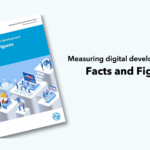Global internet connectivity saw increases in 2025, but disparities are deepening key digital divides, according to the latest edition of “Measuring digital development: Facts and Figures 2025,” an annual compendium of the most important ICT indicators gathered by the International Telecommunication Union (ITU), the UN specialized agency for digital technology.
An estimated 6 billion people, about three-quarters of the world’s population, are using the Internet in 2025, up from a revised estimate of 5.8 billion in 2024. However, digital disparities persist — about one-third, or 2.2 billion people remain offline, down from a revised estimate of 2.3 billion in 2024.
“In a world where digital technologies are essential to so much of daily life, everyone should have the opportunity to benefit from being online,” said ITU Secretary-General Doreen Bogdan-Martin. “This report highlights how today’s digital divides are being defined by speed, reliability, affordability, and skills, all of which we must prioritize as we work toward our mission of universal connectivity.”
For Giga, “Facts and Figures 2025” presents data confirming progress in expanding digital connectivity, while pointing to differences in quality that impact how users benefit from Internet use.
The report underscores the persistence of several digital divides:
- 94 per cent of people in high-income countries use the Internet, in contrast to only 23 per cent in low-income countries;
- 96 per cent of those offline live in low- and middle-income countries;
- 77 per cent of men are online compared to 71 per cent of women;
- 85 per cent in urban areas are online versus 58 per cent in rural areas;
- 82 per cent of 15–24-year-olds use the Internet, compared with 72 per cent of the rest of the population.
While the report does not track school connectivity levels separately, the disparities between high-income and low-income countries are reflected in the overall imbalance in access to online learning globally.
It is estimated that half of the roughly six million schools in the world are still offline.
Overall, Facts and Figures 2025 highlights the importance of digital infrastructure, affordable services and skills training to ensure that everyone can truly benefit from advancing technologies such as artificial intelligence (AI).
For the first time, the report estimates the total number of 5G subscriptions, which now account for about one-third – or around 3 billion – of all mobile broadband subscriptions worldwide.
In 2025, 5G networks are estimated to cover 55 per cent of the world’s population, reflecting strong momentum in advanced mobile technologies. In keeping with broader tends, coverage remains uneven, with 84 per cent of people in high-income countries having access to 5G, compared with only 4 per cent in low-income countries.
The full report, including an online reader with interactive charts, can be accessed here

